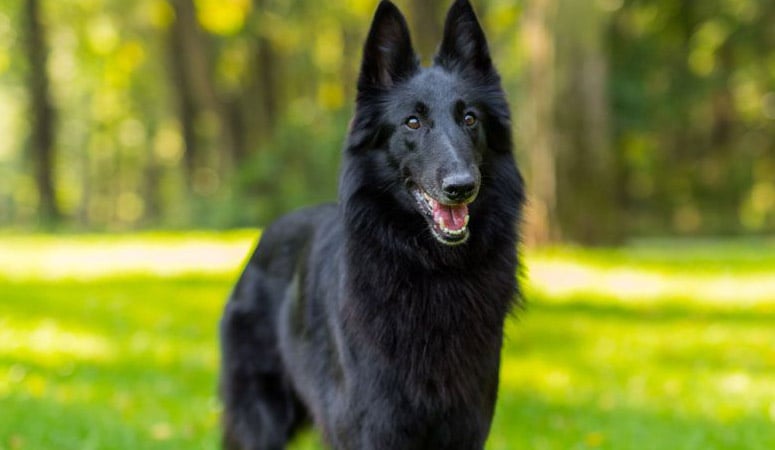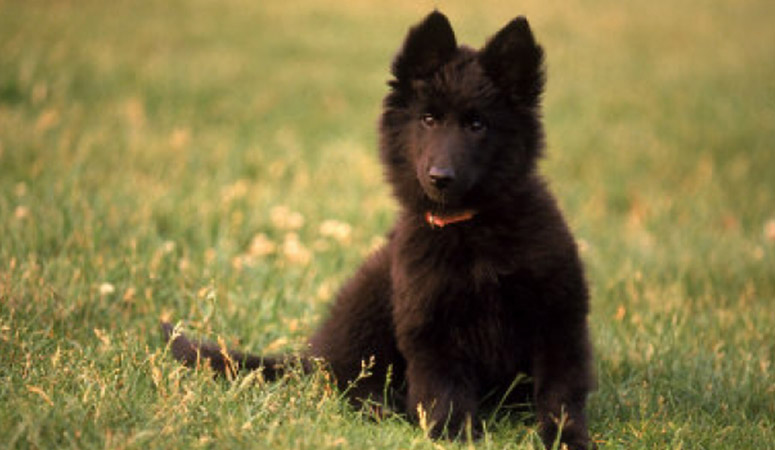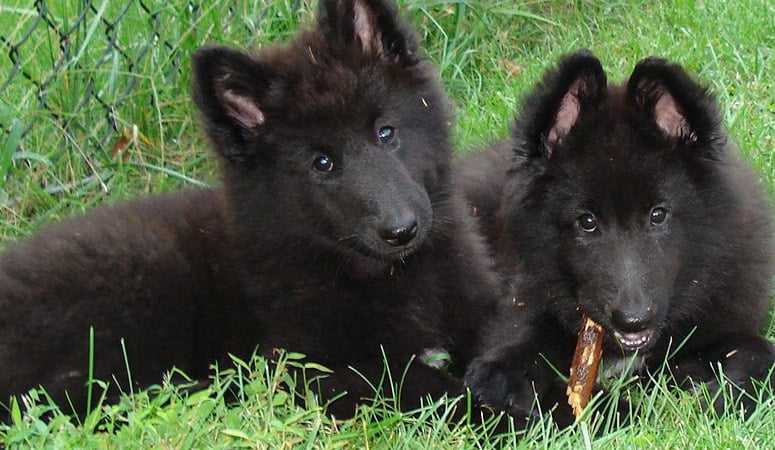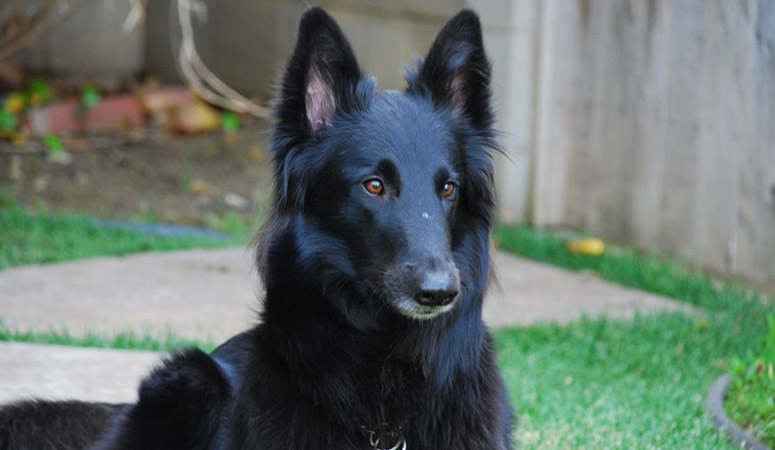Belgian Sheepdog
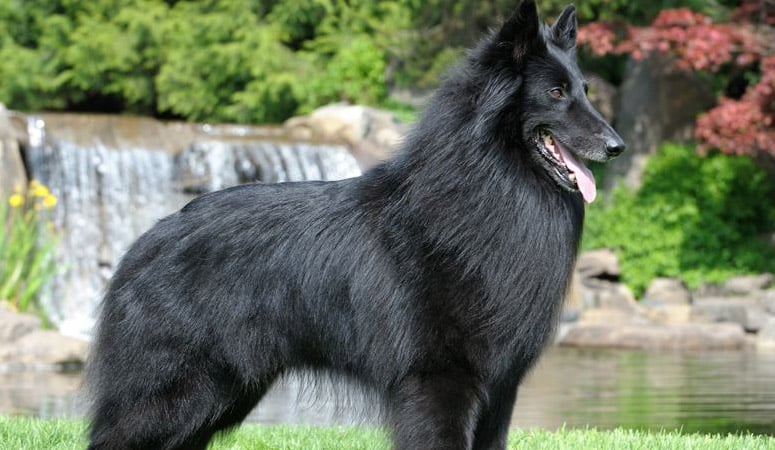
The medium-sized Belgian Sheepdog is a herding dog breed that originated in Belgium where these dogs were used to herd sheep, they have an extremely dense coat that is long, well-fitting, and straight. And today they are affectionate companions and steadfast protectors of family and property.
| Other Names | Belgian Shepherd, Chien de Berger Belge |
| Color | Black, Brindle, Cream, Fawn |
| Height | Males: 23-27 inches. Females: 21-25 inches. |
| Weight | Males: 55-66 pounds. Females: 44-55 pounds. |
| Life Span | 12-14 years |
| Personality | Bright, Watchful, Serious-Minded |
| Exercise | Energetic |
| Origin |
| Popularity | #126 |
| Groom Needs | 2-3 Times a Week |
| Kids Friendly | Yes with supervision |
| Dog Friendly | Yes with supervision |
| Watch Dog | |
| Family Dog | |
| Litter Size | 6-10 |
Belgian Sheepdog Pictures
Belgian Sheepdog Video
Introduction
They come in long-, short- or rough-coated varieties. Belgian Sheepdogs are a cocktail of elegance and strength, mingled with endurance and passion for delivery. They are workaholics by nature and yet loyal to training. A dog with a square build, spread into four varieties or perhaps four breeds is the Belgian Sheepdog. The color of the coat depends on the variety, the Laekenois is usually fawn-colored with white markings. The Malinois come in brown to tan or mahogany, with tinges of black, just like the Tervuren. The Groenendael (classified by the AKC as the main Belgian Sheepdog) has solid black coat colors, with white markings sometimes.
The watchful and friendly Belgian Sheepdog is a medium- to large-sized dog, and as such a standard male should measure between 24 and 26 inches tall at the shoulder and weigh 55-75 pounds. A similar female stands 22-24 inches at the shoulder and weighs around 45-65 pounds. They have an average life expectancy of 11-14 years.
Living with Belgian Sheepdog
The Belgian Sheepdog has an abundant double coat which is consisted of a dense undercoat and a harder outer coat, their coat is easy to take care of as long as it is not shedding season. The dog requires weekly brushing to remove dead hair and the owner needs to ensure that you brush all the way down to the skin, using a technique called “line brushing.” And the dog shed heavily during the shedding seasons in spring and fall, more frequent brushing is required to control the amount of loose hair floating around.
The Belgian Sheepdog needs an occasional bath unless he gets into something messy. Brush the teeth several times a week to keep fresh breath and prevent gum disease. And check and clean the ears for signs of infection, irritation, or wax buildup. Trim the nails regularly is helpful for splitting, cracking, or breaking a nail.
Belgian Sheepdogs need plenty of exercise every day, same as many other herding dog breeds. It is better to provide the Belgian Sheepdog with some off-leash running in a securely, fenced area in addition to long walks or jogging. At least an hour of activity every day is good for the dog’s health and keep him happy, the exercise can be broken up into two or three exercise or play sessions. Without enough exercise, the dog may change to destructive behaviors. Besides, it is suggested that owners should participate in daily exercise sessions with their Belgians because this breed craves human companionship. And if you like to hike or jog, your Belgian Sheepdog would be very happy to be by your side.
Generally, it is recommended to feed the Belgian Sheepdog with two to three cups of high-quality dry dog food every day, divided into two meals. And there should be clean and fresh water at all times. More importantly, the food amount should depend on the dog’s weight, size, age, and activity level.
Some dogs are easy to get overweight, so you need to watch their calorie consumption and weight level all the time. Treats may be an important aid in training, but excessive intake can lead to obesity. Also, owners need to distinguish which human food is safe for dogs and which are not. If you have any problems with your dog’s weight or diet, just consult from your veterinarian.
Belgian Sheepdogs are prone to the following health conditions: hip dysplasia, cataracts, epilepsy, progressive retinal atrophy, pannus (chronic superficial keratitis), sensitivity to anesthesia, etc.
Major concerns: none
Minor concerns: skin disorders, seizures, hypothyroidism, allergies,
Occasionally seen: PRA, CHD, elbow dysplasia, pannus, hemangiosarcoma
Suggested tests:
Hip Evaluation
Elbow Evaluation
Ophthalmologist Evaluation
Total Annual Cost: $3235
Cost is estimated for the first year and may vary depending on many factors, such as dog food, health care, leash, collar, licensing, possible fencing, crates, training and obedience classes, dog-walking, grooming, treats, toys, flea, tick, and heart-worm meds, microchips, etc.
Training is important to this breed, especially the socialization and puppy training classes. Early socialization is helpful to distinguish friends from potential threats for the Belgian Sheepdog, or this protective breed can become suspicious of strangers without enough socialization. Because the Belgian may be territorial and fearful of strangers if not raised properly and would become uncooperative if not trained for obedience. With proper training, there are few dogs more loyal and obedient than the Belgian Sheepdog.
And Belgian Sheepdog can learn basic obedience training with ease, it is suggested to use positive reinforcement and plenty of treats to raise good behaviors because they are sensitive to harsh training methods.
History
Livestock products such as milk and cheese were the forte of Belgium in the 1800s. As there was a large community of livestock to cater to, it behooved the Belgian breeder to seek out ways to herd and control this livestock, especially the cattle. This primarily involved the Belgian Sheepdogs, which had a wide variety from Belgium alone. Some historians claim that there were once eight different varieties of the Belgian Sheepdog before the 1890s when they were first classified into four distinct varieties on the bases of coat color and texture. The predominant varieties still exist to date and are recognized by some kennel clubs as separate breeds.
Kennel clubs in countries such as South Africa, New Zealand, UK, Canada, Australia, and indigenous Belgium, recognize the Belgian Sheepdog in four different varieties, viz the Tervuren, Malinois, Laekenois, and Groenendael varieties. However, in America, the United Kennel Club recognizes them as four varieties of the same breed while the American Kennel Club accepts them as four separate breeds ( the Tervuren as Belgian Tervuren; the Malinois as Belgian Malinois; the Laekenois as Belgian Laekenois; Groenendael as Belgian Sheepdog)
The origin of the Belgian Sheepdog breed perhaps became pronounced in the late 19th century when a group of dog enthusiasts collected foundation stock from the Belgian regions of Tervuren, Mechelen, Laeken, and Groenendael. The operation was carried out under the auspices of Professor A. Reul. A breed club, the Club du Chien de Berger Belge, was established in Brussels in 1891. The following year, a breed standard was drafted, but it wasn’t until 1901 that the breed was recognized by the Royal Saint-Hubert Society.
Helpful Information
Breed Club: BELGIAN SHEEPDOG CLUB OF AMERICA, INC.
Breed Club Link: http://www.bsca.info/
Breed Club Rescue: Belgian Sheepdog Rescue Trust
Breed Club Rescue Link: https://bscarescue.com/

